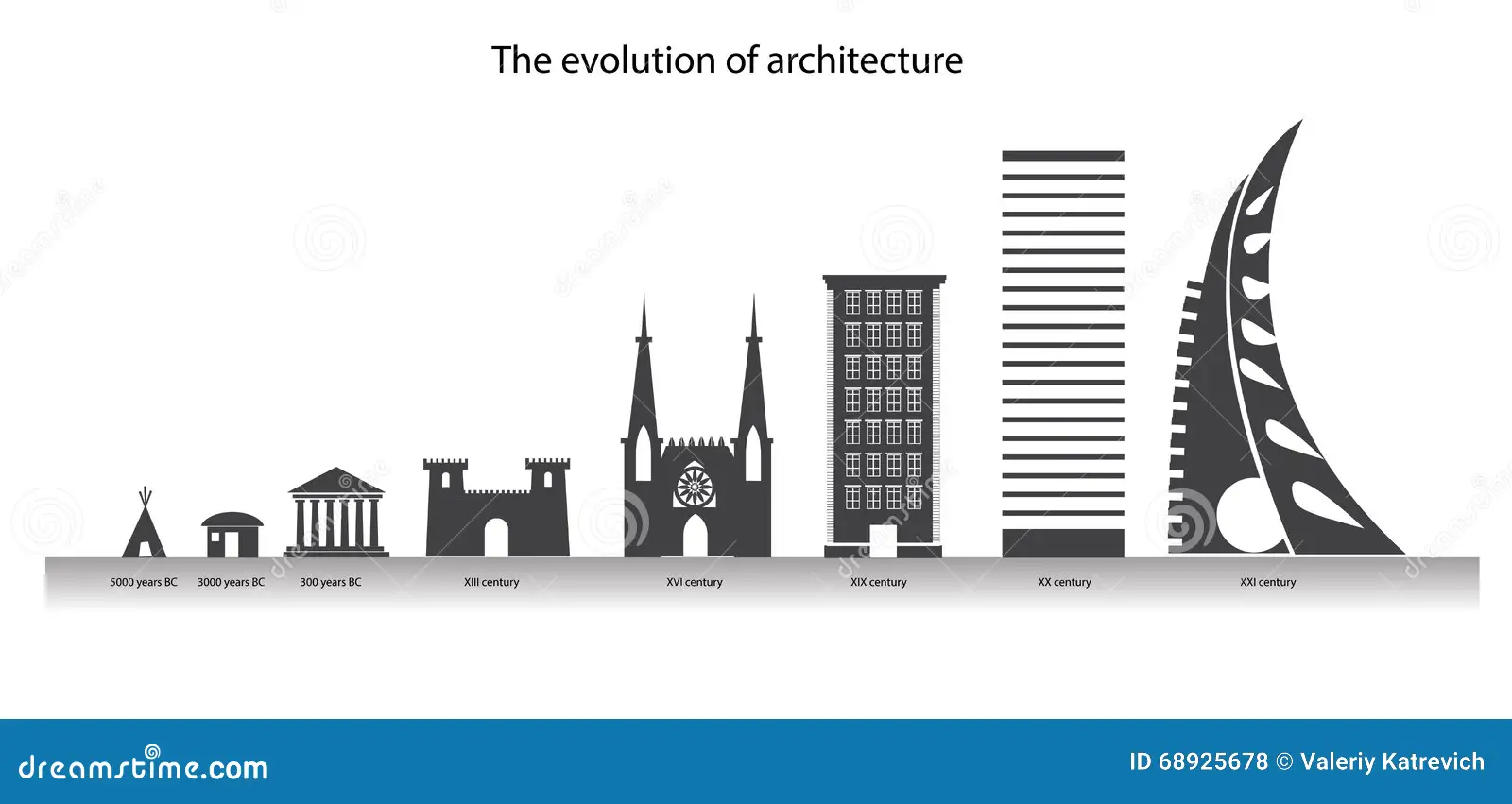The evolution of architectural styles is a complex and diverse topic, reflecting the changing tastes, values, and needs of different societies throughout history. From the ancient pyramids of Egypt to the modern skyscrapers of today, architecture has always been a reflection of the cultural, social, and technological advancements of the time.
In this essay, we will explore the major architectural styles that have developed over the centuries and how they have influenced the built environment around us.
Ancient Architecture: The Birth of Building
One of the earliest and most iconic architectural styles is ancient Egyptian architecture, which is characterized by its grandiose pyramids, elaborate temples, and towering obelisks. The ancient Egyptians placed a great emphasis on the afterlife, and as such, their buildings were designed to be durable and long-lasting, with thick walls and sturdy foundations.

Examples:
The most famous example of ancient Egyptian architecture is the Great Pyramid of Giza, which was built around 2500 BC and is still standing today.
Another ancient civilization that made significant contributions to the field of architecture was the ancient Greeks. Greek architecture is known for its symmetry, balance, and proportion, as well as its use of columns and arches. The Greeks were also the first civilization to use the classical orders, which are a set of architectural principles that dictate the design and decoration of buildings.
The most famous example of Greek architecture is the Parthenon in Athens, which was built in the 5th century BC and is considered one of the finest examples of classical architecture in the world.
Classical Architecture: The Greek and Roman Legacy
The Romans also made significant contributions to the field of architecture, and their style is characterized by its grandeur, functionality, and engineering prowess. Roman architecture is known for its use of concrete and the arch, which allowed them to build structures that were both strong and aesthetically pleasing.
Examples:
Some of the most iconic examples of Roman architecture include the Colosseum, the Pantheon, and the aqueducts that crisscrossed the Roman Empire.

Gothic Revival: Touching the Heavens
During the Middle Ages, a new architectural style emerged in Europe known as Gothic architecture. Gothic architecture is characterized by its pointed arches, ribbed vaults, and flying buttresses, which allowed for the construction of towering cathedrals with large stained glass windows.
Examples:
Some of the most famous examples of Gothic architecture include Notre Dame Cathedral in Paris and Westminster Abbey in London.
Renaissance and Baroque: A Flourish of Beauty
- The Renaissance, which began in Italy in the 14th century, marked a major shift in architectural style, as it marked the return to classical forms and principles.
- Renaissance architecture is characterized by its symmetry, balance, and proportion, as well as its use of classical orders and ornamentation.
- Some of the most famous examples of Renaissance architecture include the Palazzo della Signoria in Florence and the Pantheon in Rome.
Explore:
Neoclassical: A Return to Antiquity
The Baroque period, which began in the 17th century, saw the development of a new architectural style characterized by its grandeur, ornateness, and use of curves and counter curves. Baroque architecture is known for its elaborate facades, ornate decorations, and use of opulent materials like gold and marble.
Some of the most famous examples of Baroque architecture include the Palace of Versailles in France and the Royal Palace in Madrid.
The 18th and 19th centuries saw the emergence of several new architectural styles, including Neoclassicism, which was characterized by its use of classical forms and motifs, and Romanticism, which was characterized by its emphasis on emotion and the natural world.

Modernism: Form Follows Function
The Industrial Revolution, which took place during this time, also had a significant impact on architecture, as it led to the development of new building materials and construction techniques, such as the use of iron and steel in the construction of skyscrapers.
In the 20th century, a number of new architectural styles emerged, reflecting the changing values and needs of society. One of the most influential styles of the 20th century was the International Style, which emerged in the 1920s and was characterized by its emphasis on functionalism, simplicity, and the use of modern materials like glass and steel. This style was particularly influential in the design of office buildings and skyscrapers.
Post-Modernism and Beyond: A Blend of Styles
Another important architectural style of the 20th century was the Bauhaus movement, which originated in Germany in the 1920s and emphasized the importance of form following function. Bauhaus architecture is characterized by its simplicity, functionality, and use of industrial materials.
In the latter half of the 20th century, a number of other architectural styles emerged, including postmodernism, which rejected the rigid functionalism of the International Style and instead focused on the creation of expressive, individualistic buildings.
Contemporary Architecture: Sustainable and Innovative
Another important movement of this time was deconstructivism, which rejected the traditional principles of architecture and instead embraced chaos and fragmentation.
In recent years, there has been a growing movement towards sustainable and green architecture, which focuses on the use of environmentally friendly materials and the incorporation of natural elements into the design of buildings. This movement has led to the development of new building technologies and techniques, such as the use of solar panels and green roofs.
Conclusion
Overall, the evolution of architectural styles has been shaped by a variety of factors, including cultural values, technological advancements, and societal needs. From the grandiose pyramids of ancient Egypt to the modern skyscrapers of today, architecture has always reflected the changing tastes and values of the societies that have created it.
For CAD Blocks, visit our product Page.


